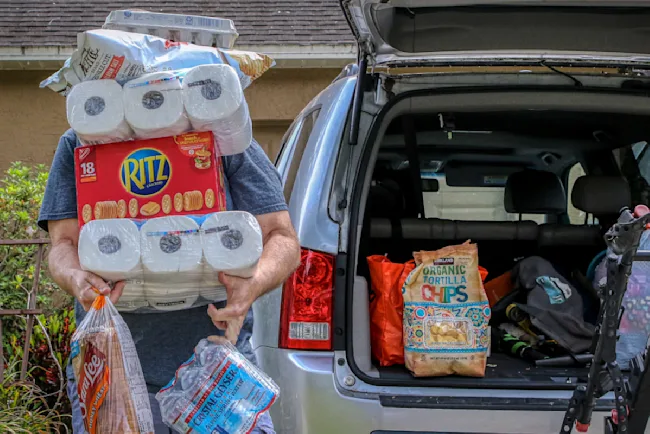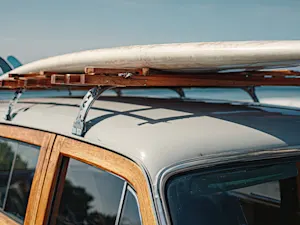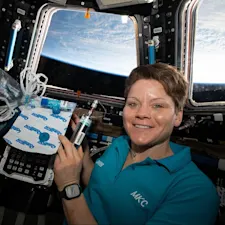
United Airlines Pilots 'Showered With Glass' After Midair Collision
A United Airlines 777-200 departing Los Angeles for Honolulu, 2021. Photo courtesy of Timothy Powaleny under CC BY-SA 4.0.
On the morning of Oct. 16, 2025, passengers aboard United Airlines flight 1039 were cruising at 36,000 feet somewhere near Moab, Utah, en route from Denver to Los Angeles when an unexpected and alarming event unfolded. The Boeing 737-8 aircraft collided with an object that cracked the cockpit's multilayered windshield, leaving the pilots "showered with glass," and forcing an emergency diversion to Salt Lake City, as reported by PEOPLE. What made this incident particularly intriguing — and a bit unsettling — was the likely culprit: a weather balloon.
A High‑Altitude Collision With a Weather Balloon?
The National Transportation Safety Board (NTSB) released a preliminary report shedding light on the incident. According to the report, the captain noticed an object on the horizon just moments before a loud bang signaled the collision, as reported by PEOPLE. The impact cracked the first officer's forward windshield, sending glass fragments flying into the cockpit. The captain suffered multiple superficial cuts on his right arm, while the first officer escaped injury. Despite the damage and the shock, the crew maintained control, coordinated with air traffic control, and safely landed the plane in Salt Lake City. Remarkably, none of the 111 passengers or crew members aboard were harmed.
The NTSB investigation pointed to a weather balloon as the likely object involved. WindBorne Systems, a company specializing in long-duration smart weather balloons, reported losing contact with one of their global sounding balloons (GSBs) in the vicinity of the flight path. This balloon had been launched from Spokane, Washington, the previous day and had traveled south through Oregon and Nevada before turning northeast, crossing through Utah, aligning with the location and timing of the collision.
What Are Weather Balloons and Why Are They a Risk?
Weather balloons are large, helium-filled balloons equipped with instruments to collect atmospheric data. They ascend to high altitudes — often above 100,000 feet — before bursting and falling back to Earth. While designed to be lightweight and minimize harm, their presence in busy airspace can pose risks, especially when they drift into commercial flight paths.
WindBorne Systems, a company that operates these balloons, emphasized that their balloons are engineered to reduce damage in the event of a collision, but this incident highlights the rare but real dangers they can present. The NTSB report noted that the aircraft's windshields are certified to withstand impacts from birds weighing up to four pounds without penetration, yet the balloon's collision still cracked the windshield, underscoring the unexpected nature of the event.
What Travelers Aged 55+ Should Know About In-Flight Safety and Rare Risks
For travelers, especially those aged 55 and older who may fly frequently or have heightened concerns about safety, this incident serves as a reminder of the unpredictable nature of air travel. While commercial aviation remains one of the safest modes of transportation, rare events like this collision can occur.
Here are some key takeaways for seasoned travelers:
-
Stay informed about flight safety. Airlines and regulatory bodies continuously monitor and improve safety protocols. Incidents involving weather balloons are uncommon, but awareness helps you understand the complexities pilots face.
-
Trust the crew's expertise. The quick and composed response by the United Airlines crew prevented what could have been a serious emergency. Pilots are trained to handle unexpected situations, including sudden windshield damage.
-
Know the aircraft's safety features. Modern aircraft are built with multiple layers of protection. The multilayered windshield, for example, is designed to withstand significant impacts, and cabin pressurization systems are robust enough to maintain stability even after damage.
-
Prepare for the unexpected. While you can't predict every scenario, having a calm mindset and following crew instructions during emergencies is crucial. This incident had no injuries beyond minor cuts, thanks to the crew's professionalism.
-
Understand rare risks. Weather balloons and other unusual airborne objects are monitored, but their unpredictable paths mean pilots must stay vigilant. This event has prompted the balloon company to implement additional safety measures to reduce future risks.
What's Next? The Ongoing Investigation and Safety Measures
The NTSB continues to investigate the precise cause and circumstances of the collision. Meanwhile, WindBorne Systems said in a statement they've "already implemented four additional safety measures to further reduce the possibility of any future aircraft-balloon interactions as well as mitigate harm should an impact occur again," as reported by PEOPLE.
For the aviation industry, this event is a wake-up call to the challenges posed by emerging technologies and atmospheric research tools sharing the skies with commercial flights. It also underscores the importance of ongoing collaboration between airlines, regulatory agencies, and companies operating airborne devices.
Final Thoughts
While the image of pilots being "showered with glass" mid-flight might sound like a scene from a thriller, the reality is that the United Airlines crew's calm and skilled handling of the situation ensured everyone's safety. For travelers, especially those in the 55+ age group who may be more cautious about flying, this incident is a reminder that aviation safety is a complex, ever-evolving field.
Next time you board a plane, you can take comfort in knowing that behind the scenes, countless experts are working to keep the skies safe — even when unexpected visitors like weather balloons make an appearance.
References: Pilots 'Showered With Glass' After Passenger Jet Collides With Object | Plane Windshield Cracks Mid-Flight After Being Struck by an Unknown Object as Injured Pilot Makes Emergency Landing
























